
Sears Holdings Corp., owner of Sears and Kmart stores, said Thursday it plans to close 28 more Kmart locations this year, in another sign the once-iconic retailer’s financial condition is deteriorating.
The announcement about the store closings follows previous announcements from the Hoffman Estates, Illinois-based retailer that it shuttered 180 Sears and Kmart stores this year and will close 150 more locations by the end of the third quarter.
Sears also reported fiscal second-quarter financial results Thursday that put the company’s difficulties in stark relief. The retailer said overall sales at stores open at least a year – a key retail industry metric – declined 11.5% during the second quarter of 2017, below analyst expectations.
Sears is dealing with the same challenging retail environment as peers such as Macy’s and J.C. Penney Co. — falling foot traffic at shopping malls and the migration to e-commerce companies such as Amazon.com.
Due largely to the success of e-commerce companies, Sears is just one of several major retailers that are closing dozens, and in some cases hundreds of stores. Some of the retailers closing the most stores this year are not downsizing but shuttering their businesses entirely. All but one of the five companies at the top of this list have filed for bankruptcy and announced plans to close all their stores.
To identify the companies closing the most stores, 24/7 Wall St. reviewed major U.S. retailers that have announced store closings for 2017. All listed store closings are based on company announcements that will either take place entirely, or will begin, in 2017. Total store counts are based on company annual reports, when available, or corporate websites, and are U.S. store closures only, unless otherwise specified.
Click here to see the 22 retailers closing the most stores.
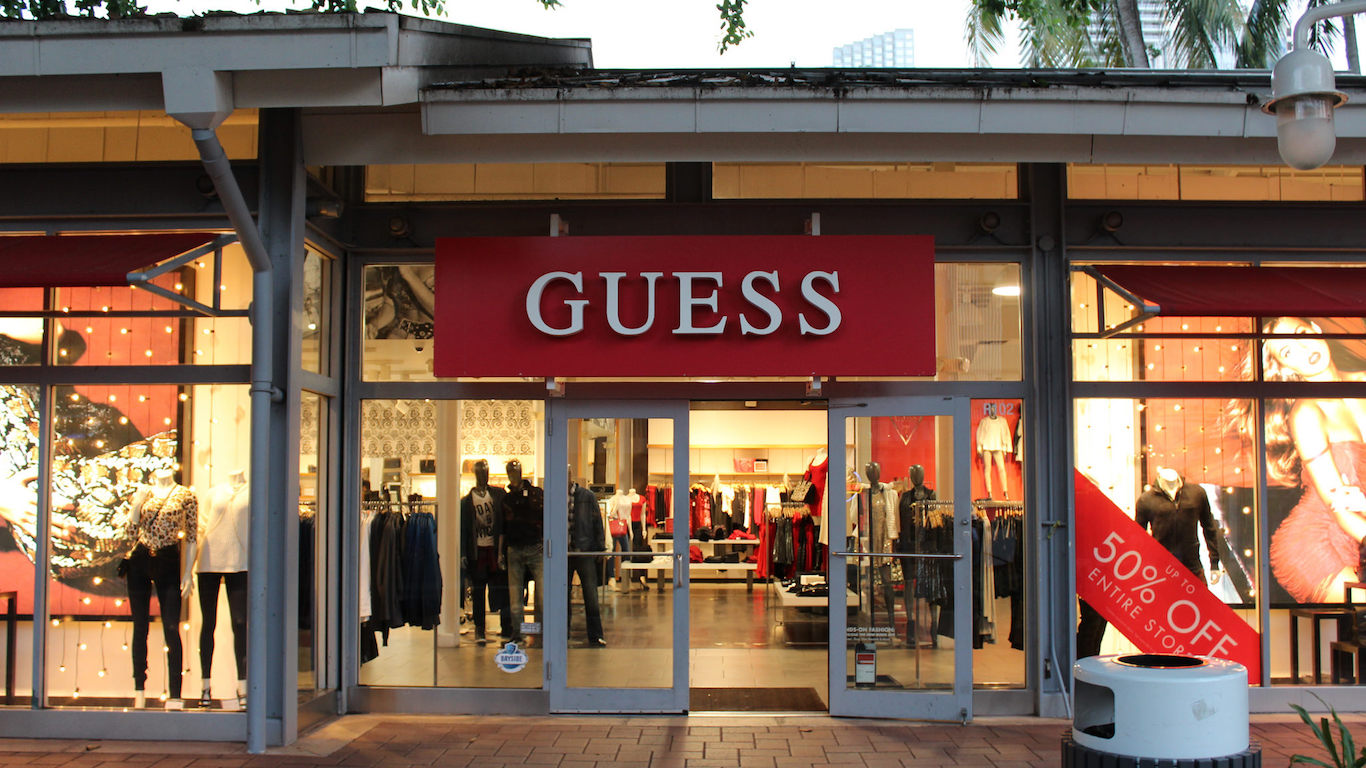
22. Guess
> Closings: 60
> Total stores: 339
> Industry: Fashion
Guess is one of a number of retailers which have a substantial presence in mall and other shopping centers to announce substantial store closings. During the company’s fourth quarter earnings call in mid-March, Guess?, Inc. CEO Victor Herrero announced plans to shutter about 60 of the retailer’s locations. This will approximately match the number of locations it has closed over the past two years combined. Most of the closures will likely be the company’s flagship stores. Herrero said the Guess would also target locations of the company’s Marciano chain for closures.
[in-text-ad]
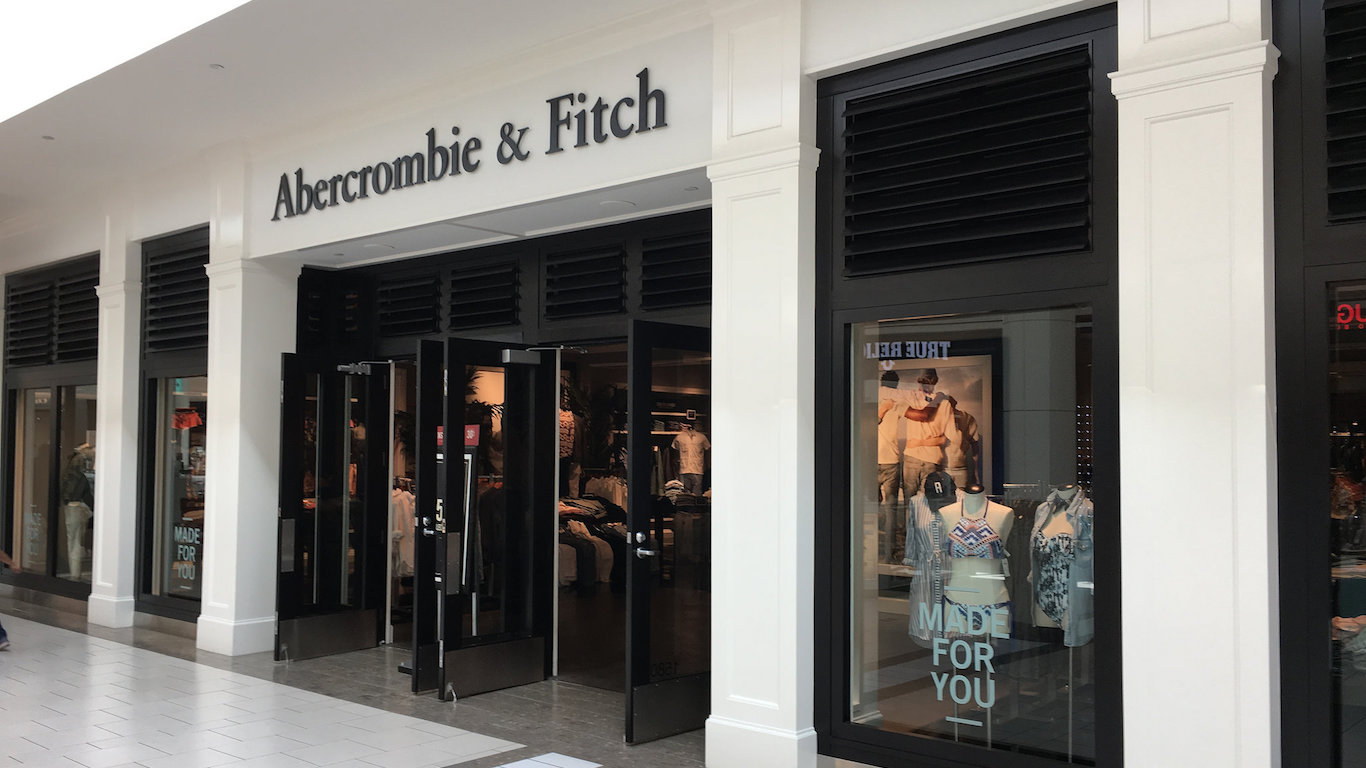
21. Abercrombie & Fitch
> Closings: 60
> Total stores: 340
> Industry: Teen apparel
Teen and young adult apparel company Abercrombie & Fitch, which also owns Hollister, has fallen on hard times as of late. The company’s sales have been hurt by the ever-growing popularity of online shopping and by more affordable fast-fashion retailers. In its most recent annual report, A&F noted that its success is closely tied to foot traffic in American malls. The company warned that if mall traffic continues to decline, it will likely be felt in the retailer’s bottom line.
During its fourth quarter conference call in March, the company said it will close 60 stores this year. Given that sales of the company’s namesake brand are down 11% from 2015 to 2016 while Hollister sales have remained steady, it is likely that most closings will be A&F locations.

20. CVS Health
> Closings: 70
> Total stores: 9,709
> Industry: Health and wellness
CVS Health announced in December 2016 its plans to close 70 of its 9,700 locations over the next few months. The announcement came after a relatively good year for CVS, in which the company’s annual revenue increased 16% from $153.3 billion in 2015 to $177.5 billion in 2016. The closures are part of several cost-cutting measures CVS is implementing that the company estimates will generate $3 billion in savings by 2021. While the company has reported rising profits in recent years, the cost-cutting initiative may be a precautionary measure in light of growing uncertainty within the health care industry under the current presidential administration.

19. Staples
> Closings: 70
> Total stores: 1,255
> Industry: Big box retailer
During its fourth quarter earnings announcement, in which it also reported a 7% quarterly decline in same-store sales, Staples announced plans to close 70 locations in North America. The office supply retailer already closed 48 stores in 2016 and 73 in 2015 as it has been facing increased competition both from other brick-and-mortar as well as online retailers. In an effort to consolidate, Staples sought to merge with Office Depot, but the deal fell through in 2016 after a federal judge blocked the move on antitrust grounds. In April, The Wall Street Journal reported that the struggling retailer is considering offering itself up for sale in light of the failed merger.
[in-text-ad-2]
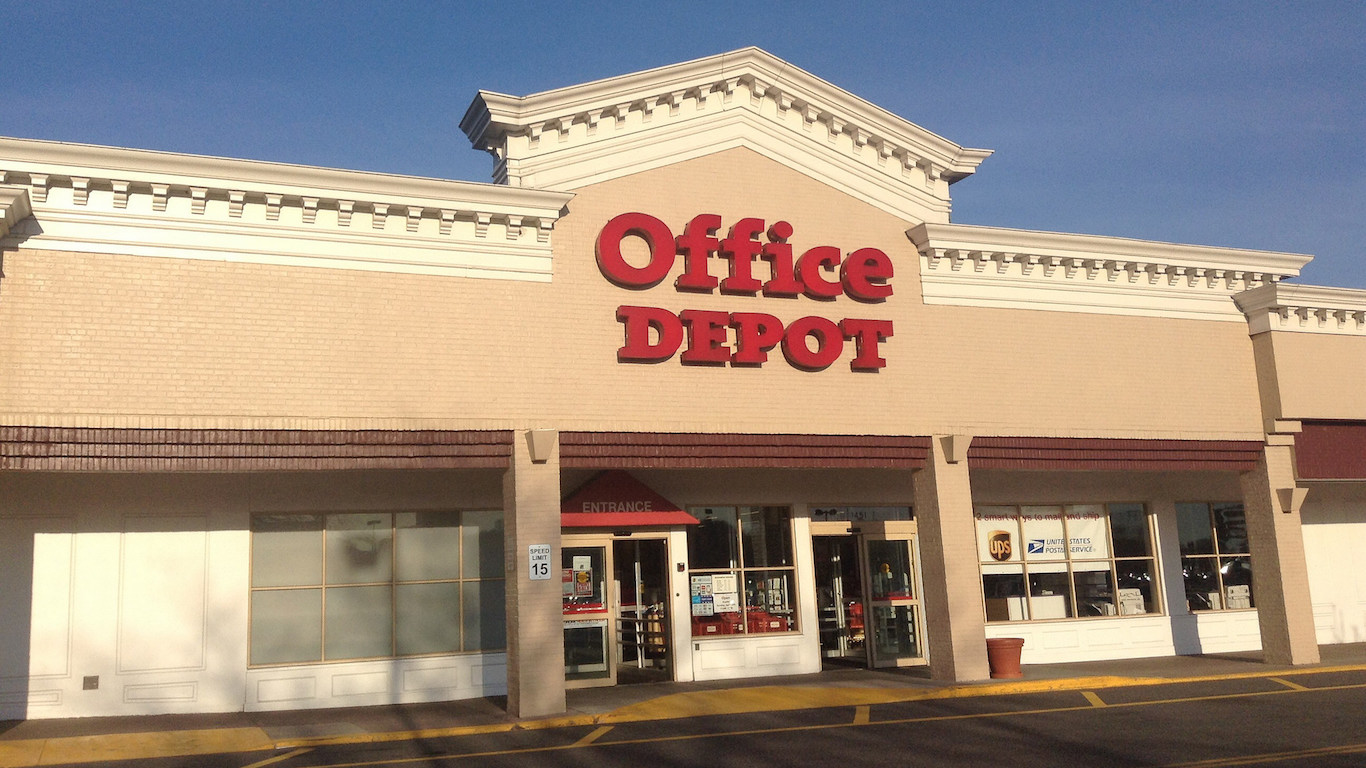
18. Office Depot
> Closings: 75
> Total stores: 1,441
> Industry: Office products
In August 2016, three months after a federal judge blocked the company’s proposed merger with Staples, Office Depot announced its plans to close approximately 300 stores over the next three years. The company intends to close 75 locations in 2017. The closures are part of a cost savings program that Office Depot expects will generate $250 million in benefits by 2018. The company has already closed 400 stores since 2014, but plans to expand its pilot program for a new store concept by opening 100 redesigned stores roughly half the size of a typical Office Depot location.
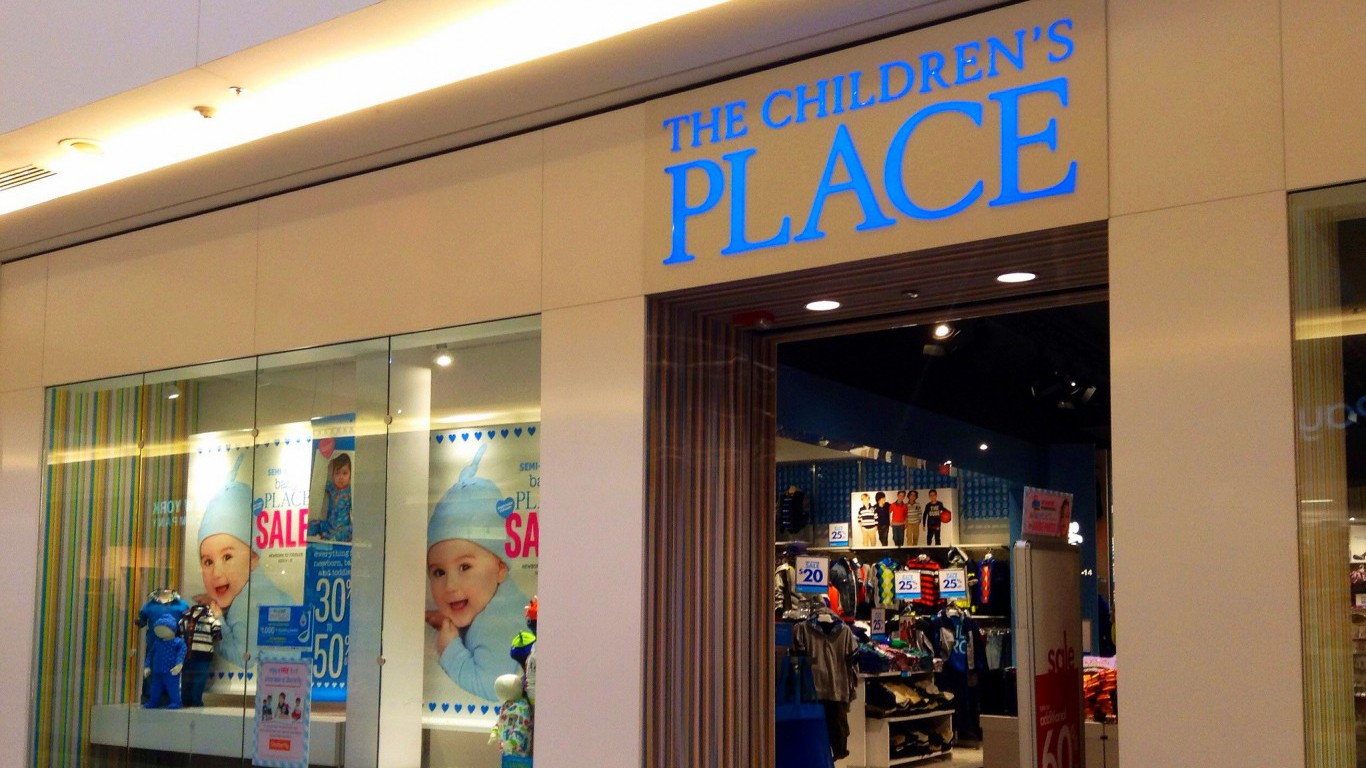
17. The Children’s Place
> Closings: 80
> Total stores: 930
> Industry: Children’s apparel
The Children’s Place is one of many retailers shifting focus away from its brick-and-mortar operations and dedicating more resources to digital distribution channels. In 2012, Children’s Place began a series of store closings that will amount to 200 closed locations by the end of 2017. Having already closed 120 stores, the company plans to shutter the remaining 80 locations this year. One reason for the store closures is Children’s Place’s prioritization of e-commerce sales. The company reported that online sales have increased in the areas where brick-and-mortar stores have been closed. The Children’s Place’s online sales have increasingly accounted for a larger share of total revenue, from 15.9% of net sales in 2014 to 17.1% in 2015.
[in-text-ad]
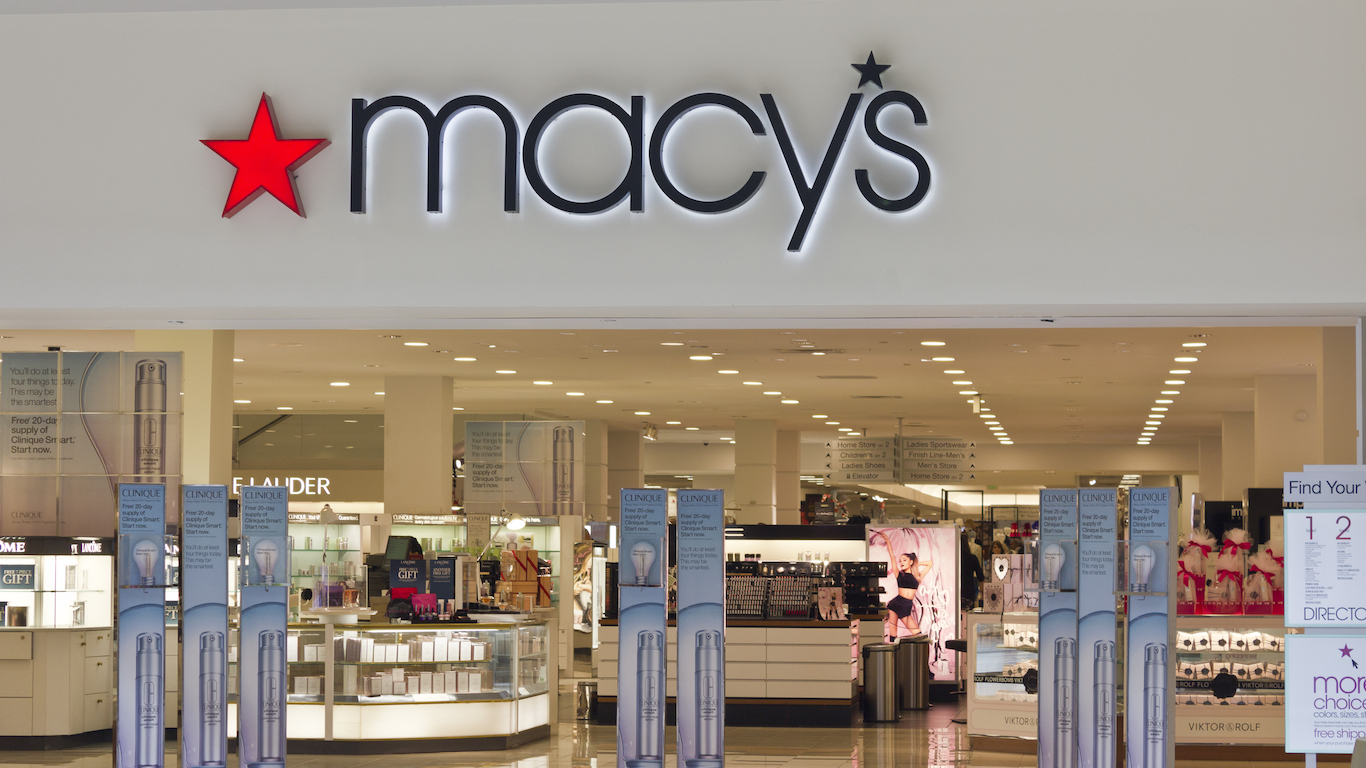
16. Macy’s
> Closings: 100
> Total stores: 730
> Industry: Department store
Macy’s, one of the nation’s oldest and most famous retailers, announced in August of last year its plans to close 100 stores, or 14% of its store count, by early 2017. Macy’s has already determined the locations of 68 of the 100 stores it plans to shutter. The majority of these will close by spring. Unlike a number of other retailers on this list, Macy’s is not at risk of bankruptcy, nor will its physical presence likely disappear any time soon. The company reported over $1 billion in net income in each of the last five fiscal years.
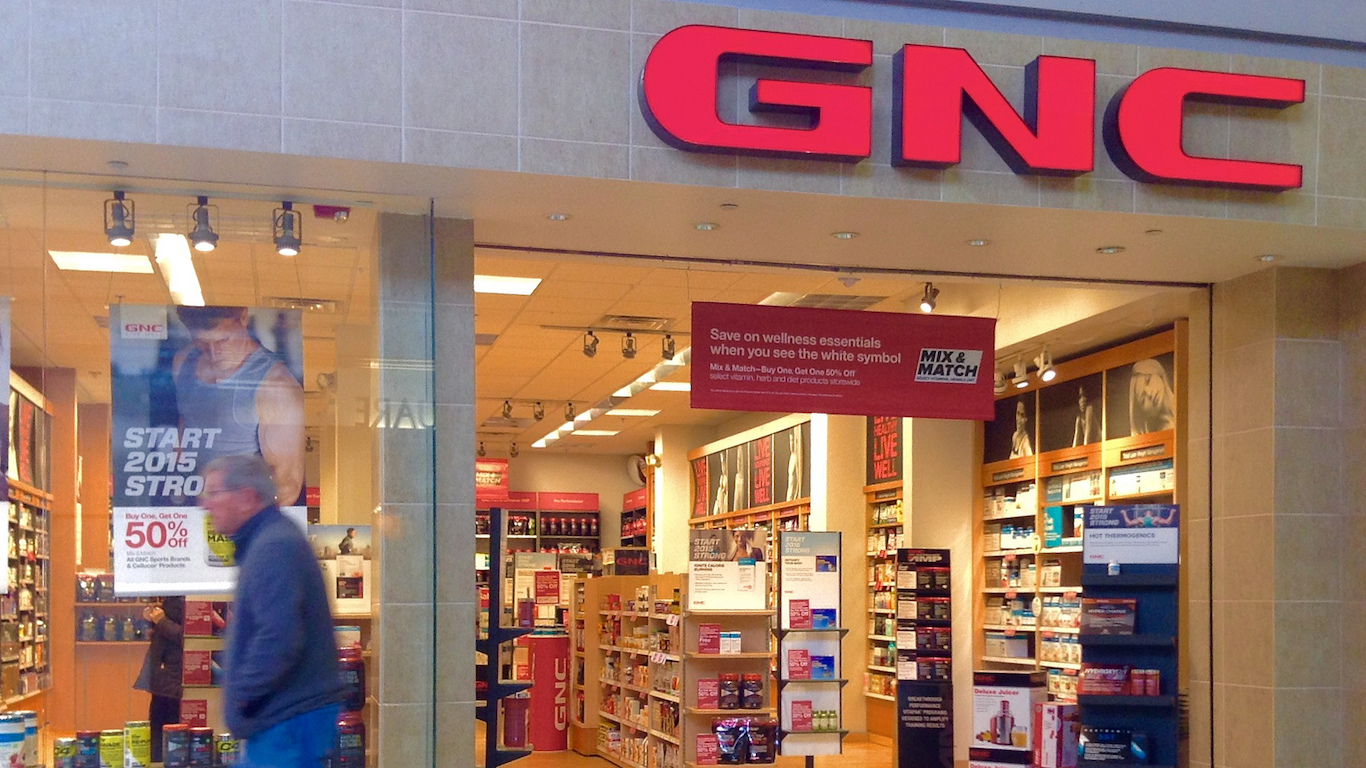
15. GNC
> Closings: 100
> Total stores: 4,464
> Industry: Health and wellness products
As part of its One New GNC rebranding campaign, GNC is reducing prices on half of its products, introducing a new customer loyalty program, and expanding its generic product line. The company also plans to close approximately 100 of its less profitable stores in 2017. The rebranding campaign and store closure announcement come at a time of declining profitability for the health retailer. GNC reported a net loss of $286.3 million in 2016, down from a profit of $219.3 million the year before.

14. Sears
> Closings: 106
> Total stores: 705
> Industry: Department store
Sears Holdings Corporation, which owns the eponymous retail brand as well as Kmart, has long struggled. The retailer has reported five straight years of losses, totaling over $8.2 billion. In an attempt to stem the bleeding, the company has been shuttering locations for years, including 23 Sears locations in 2013, 61 in 2014, and 12 in 2015. In 2007, there were over 900 Sears locations in the United States and Puerto Rico. As of January 2016, there were barely over 700. And this trend appears likely to continue. So far, the number of stores Sears has closed in 2017 or plans to close has topped 100, and there is plenty of year left.
[in-text-ad-2]
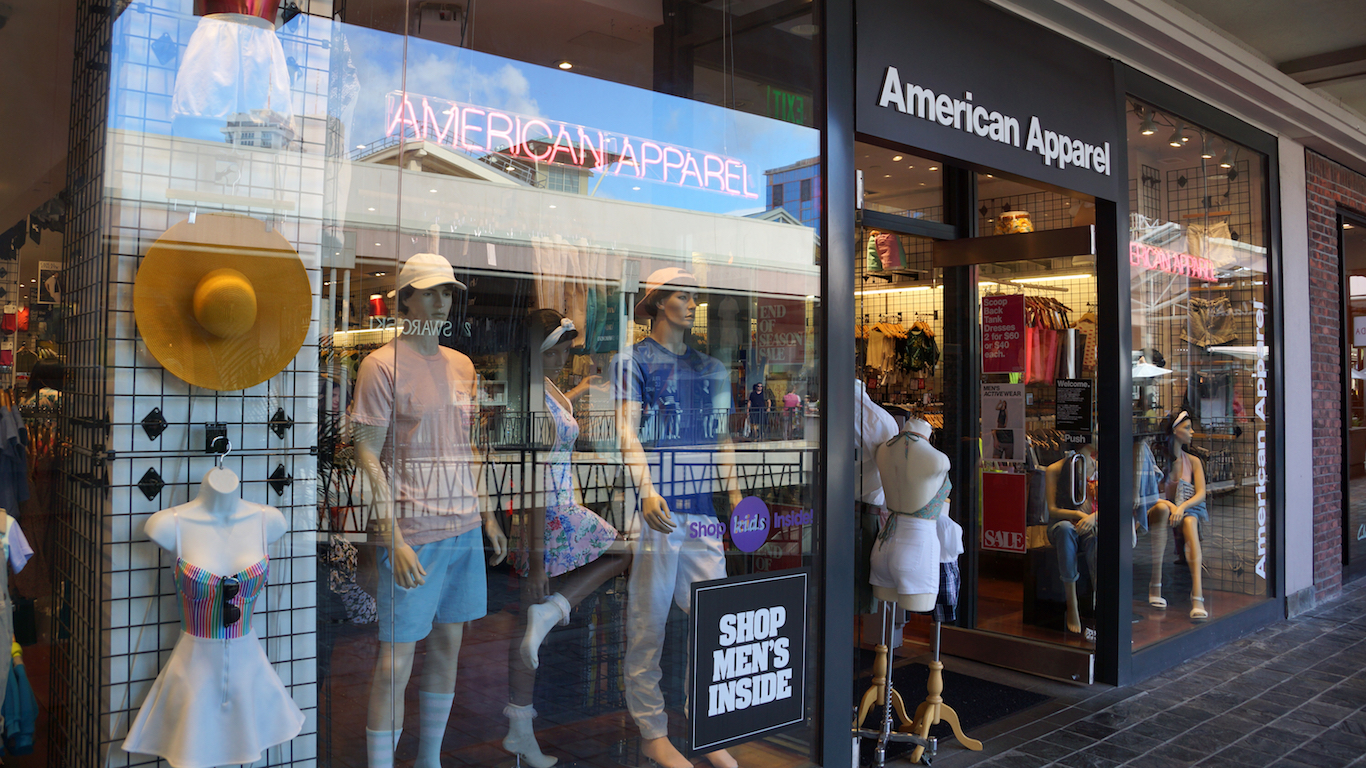
13. American Apparel
> Closings: 110
> Total stores: 110
> Industry: Fashion
Trendy clothing store American Apparel has been beleaguered by scandal for years. In 2009, a federal investigation revealed the company employed hundreds of unauthorized workers. In 2014, the company board forced founder Dov Charney out as CEO based on a number of outstanding harassment charges. Later that year, the former CEO attempted to stage a hostile takeover of the company, leading eventually to Charney being hired as a paid consultant for the company. In the midst of all this, American Apparel was failing, reporting over $330 million in losses from 2010 through 2014. In early January 2007, the retailer, which was once valued at over $1 billion, was acquired by Canadian company Gildan Activewear for less than $100 million. Shortly thereafter, Gildan announced it would close all 110 locations, as well as the company headquarters in Los Angeles.
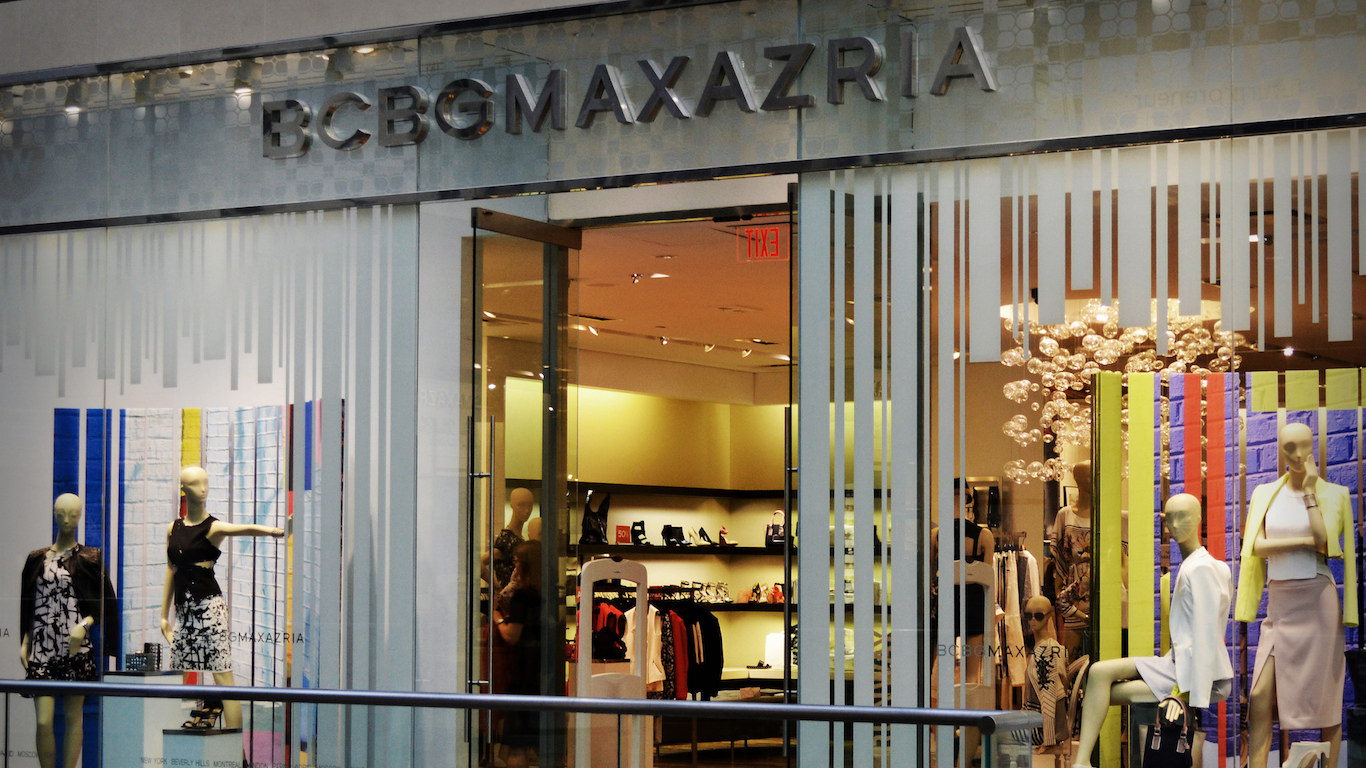
12. BCBG Max Azria
> Closings: 120
> Total stores: 175
> Industry: Fashion
California-based fashion retailer BCBG Max Azria Group announced on February 28 it had filed for bankruptcy. The company obtained a $45 million loan to conduct its reorganization and to help reduce its debt. According to court filings, BCBG owes it creditors $459 million. Earlier in February, BCBG announced its plans to close 120 stores, and the closures may continue under the restructuring plan. The bankruptcy and store closings reflect industry-wide shifts in shopping patterns, including a decline in purchasing branded clothing, as well as the growth of online shopping.
[in-text-ad]

11. J.C. Penney
> Closings: 130-140
> Total stores: 1,021
> Industry: Apparel and furnishings
J. C. Penney Company says it will close between 130 and 140 of its roughly 1,000 stores over the next several months, in addition to two distribution facilities. In the February announcement, CEO Marvin Ellison said closing stores will allow J.C. Penney to more effectively compete with online retailers. The company expects to incur $225 million in costs as a direct result of these store closings, primarily because of the termination of store leases. The company has announced it will include voluntary early retirement plans for approximately 6,000 of its employees. The company projects savings of $200 million a year in payroll and other costs as a result of the stores closures.

10. Vanity
> Closings: 137
> Total stores: 137
> Industry: Women’s clothing
Based in Fargo, North Dakota, Vanity has sold women’s clothing in malls throughout the United States for over 50 years. In early 2017, however, Vanity announced its intention to close all 137 of its locations after filing for Chapter 11 bankruptcy protection. Vanity’s bankruptcy announcement comes at a time when more and more consumers are doing their shopping online rather than at the mall, which Board Chairman Jim Bennett cited as a primary reason behind the company’s poor sales performance. The company has indicated on its website that liquidation sales have begun and that all sales are final.

9. GameStop
> Closings: ~150
> Total stores: 5,466
> Industry: Video games
GameStop became this March the latest in a number of primarily mall- and shopping centers-based retailers to announce significant store closings. In a public statement, in which it noted disappointing holiday shopping season sales, the video game retailer announced plans to close 2%-3% of its worldwide locations in 2017. Shares of the company have plunged more than 25% over the past 12 months.
[in-text-ad-2]
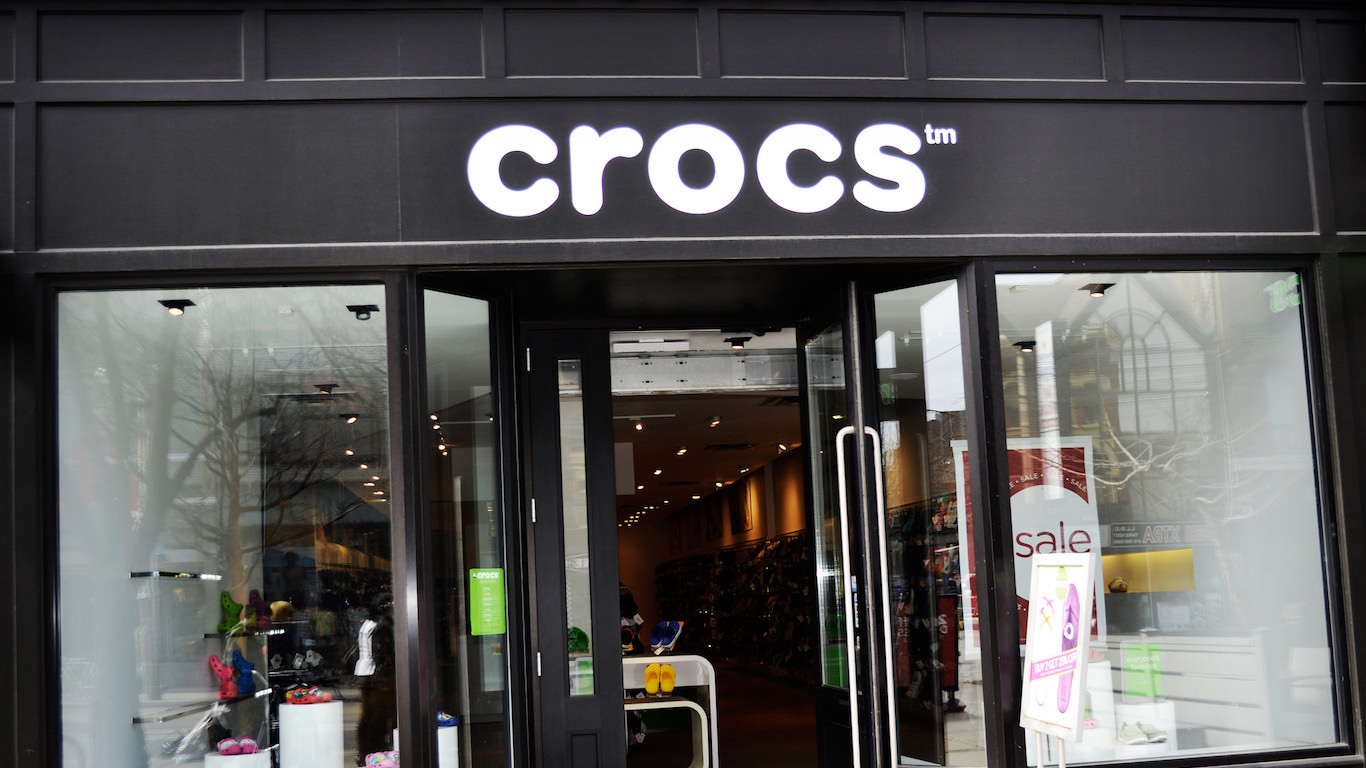
8. Crocs
> Closings: 160
> Total stores: 558
> Industry: Specialty footwear
Crocs, Inc. revenue fell by roughly 5.0%, or $54.4 million, between 2015 and 2016. In the wake of falling sales, Crocs announced in March 2017 the promotion of a new CEO, several changes to its executive team, and a number of future store closings. Current President Andrew Rees will assume the CEO role as well. The company will also establish a new e-commerce division and close 160 of its retail locations by the end of 2018. Crocs is one of many retailers that are doubling down on e-commerce while slimming their brick-and-mortar operations. While the company’s retail sales fell by 5.0% between 2015 and 2016, Crocs’ e-commerce sales increased by 7.9%.
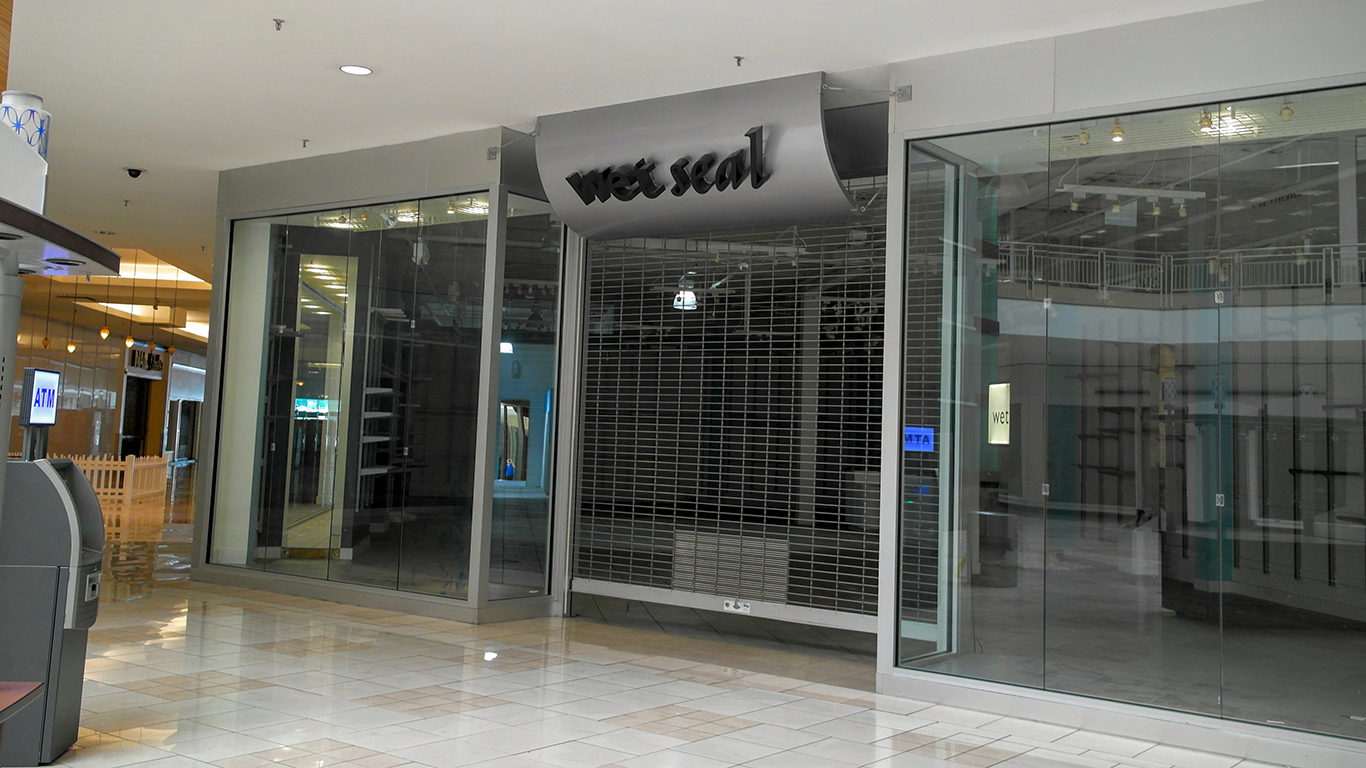
7. Wet Seal
> Closings: 171
> Total stores: 171
> Industry: Women’s apparel
Wet Seal filed for bankruptcy protection in February for the second time in its history, claiming assets valued between $10 million and 50 million and liabilities between $50 million and 100 million. The teen clothing chain joins a number of brick-and-mortar retailers struggling with the growing trend among shoppers of purchasing items online. Like most retailers, Wet Seal has its own web option for customers, although its efforts to grow online sales clearly have not kept pace with the declining in-store sales
[in-text-ad]
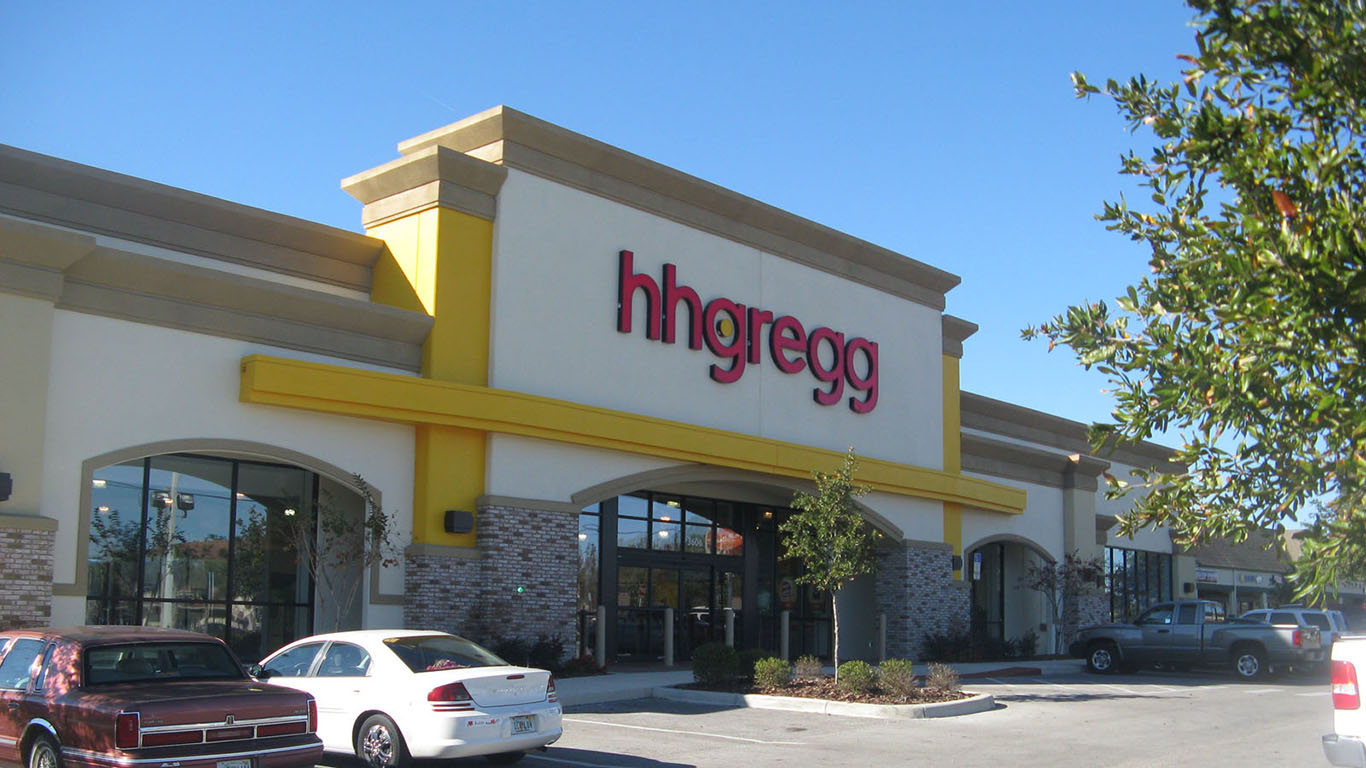
6. HHGregg
> Closings: 220
> Total stores: 220
> Industry: Appliance, electronics, and furniture
In March 2017, four days before the company disclosed it filed for Chapter 11 bankruptcy protection, HHGregg announced its plans to shutter 88 stores by the middle of April. However, when the company want unable to find a buyer for the failing brand, the company announced it would be closing all remaining locations. Precipitating the bankruptcy, HHGregg lost money in the last two years, and the company’s total revenue fell by 8% from 2015 to 2016.
According to court documents, Wet Seal’s largest creditor is FedEx Corporation, which is owed $608,977. Creditors with the largest unsecured claims also include Celebrity Pink, GF Holdings, and Google.

5. Family Christian Store
> Closings: ~240
> Total stores: ~240
> Industry: Christian retail
The evangelical Christian market grew rapidly in the 1990s and continues to represent a substantial share of U.S. spending. Despite the interest in such products, Family Christian Store, once the self-proclaimed leader of the industry, has not managed to combat shifts within the retail sector. Christian-related product retailer and consolidator Family Christian Store filed for bankruptcy protection in 2015. Creditors forgave $127 million in debt to help the retailer recover. Despite this, the company announced just two years later, on February 23 2017, that it would close all of its 240 stores.
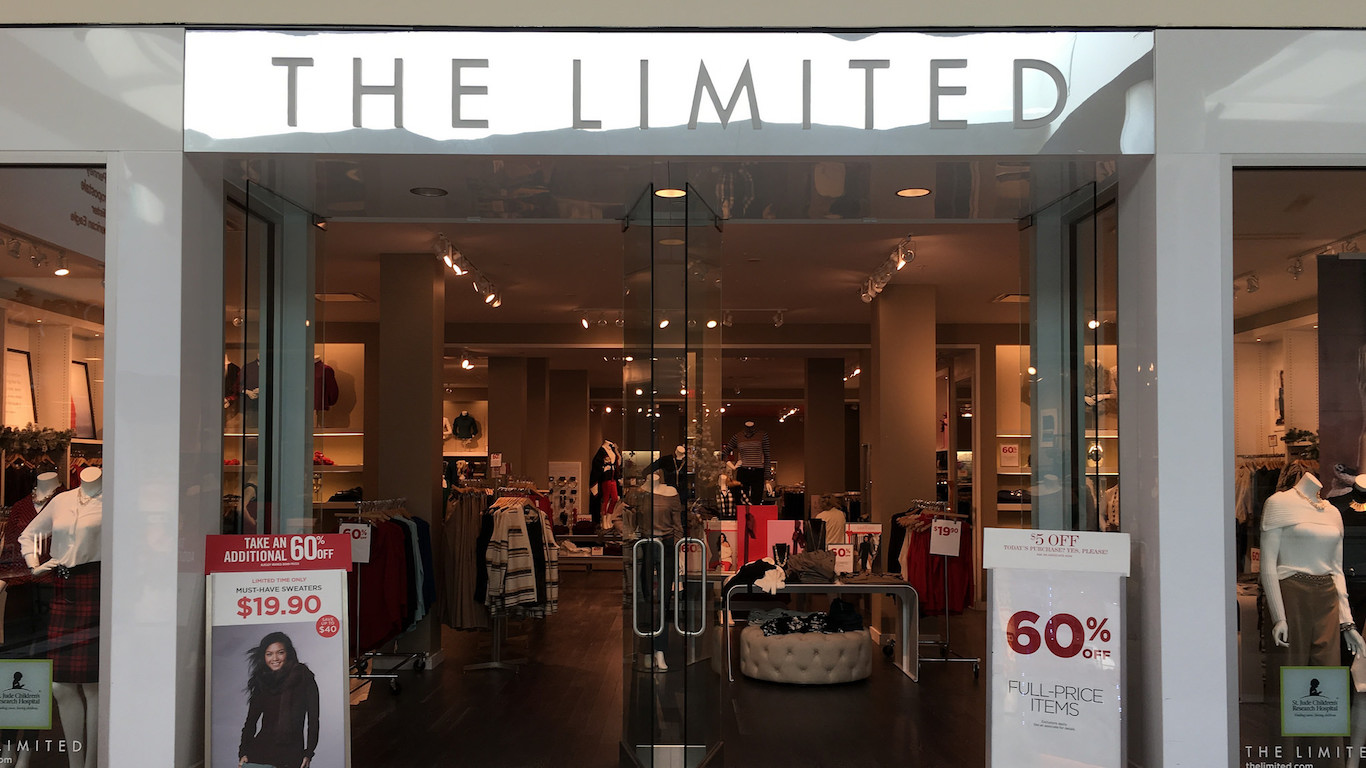
4. The Limited
> Closings: 250
> Total stores: 250
> Industry: Apparel
As part of what seems to be the ongoing destruction of the U.S. brick-and-mortar retail industry, women’s clothing seller The Limited announced January 8 it would close all of its approximately 250 physical locations. While company officials stated in January that the retailer would continue to exist as an online merchant, The Limited website was down as of the time of this writing.
With the store closures, roughly 4,000 jobs were eliminated. Despite the closures, private equity firm Sun Capital Partners, which purchased the retailer outright in 2010, disclosed at the time of the closure announcement it had doubled its investment in The Limited in early January. However, on January 17 the company filed for bankruptcy.
[in-text-ad-2]
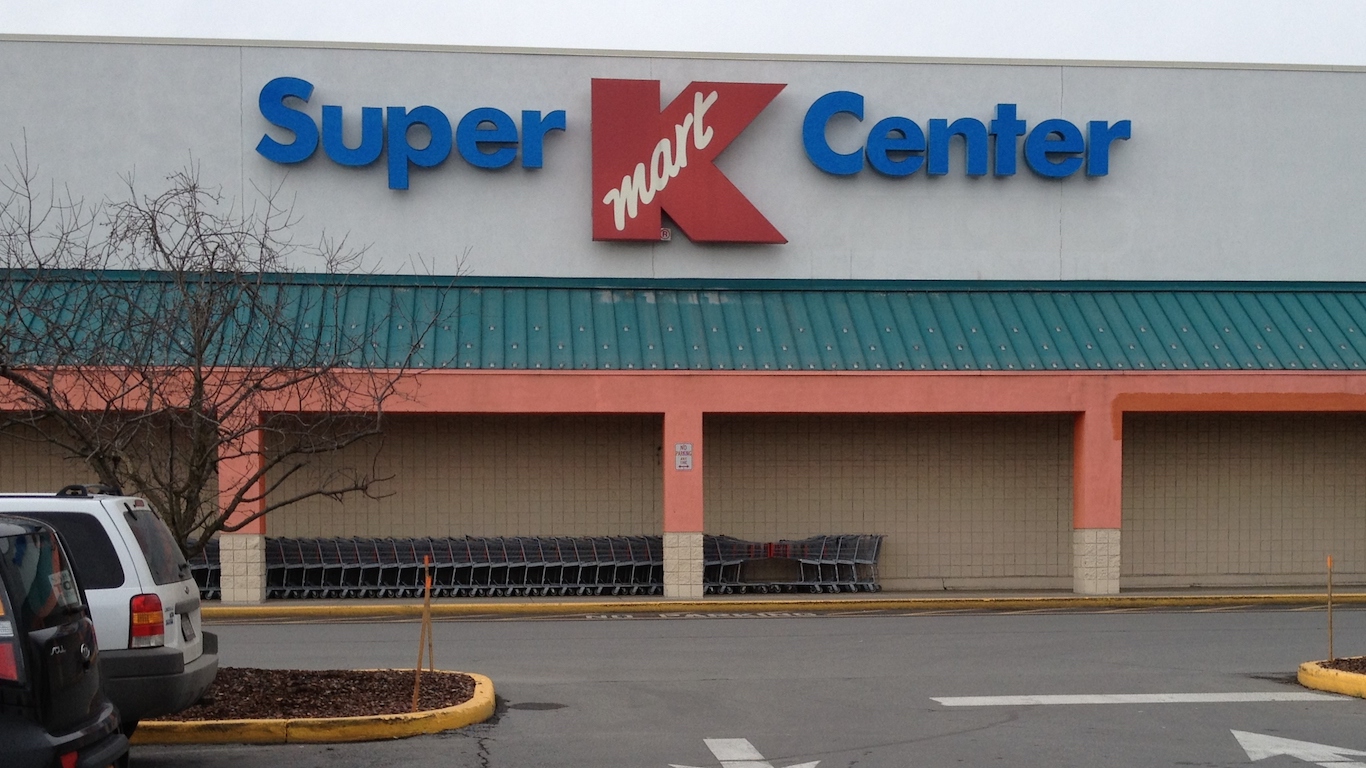
3. Kmart
> Closings: 267
> Total stores: 801
> Industry: Department store
Sears Holdings Corporation announced in January 2017 its plans to shutter 42 more Sears locations and 108 Kmart locations for a total of 150 store closings, in addition to the 180 already planned. The announcement is the latest in a series of closings that have reduced the total number of Kmart locations in the United States from 1,480 in 2004 — the year Sears Holdings purchased Kmart — to 801 today. Over the same period, sales at Kmart stores have fallen from $19.8 billion to less than $11 billion. Most analysts believe Sears Holdings is no longer viable and is unlikely to steer itself away from its current path toward bankruptcy. During its second quarter earnings report, Sears Holdings announced it would be closing an additional 28 Kmart locations, in addition to those already planned.
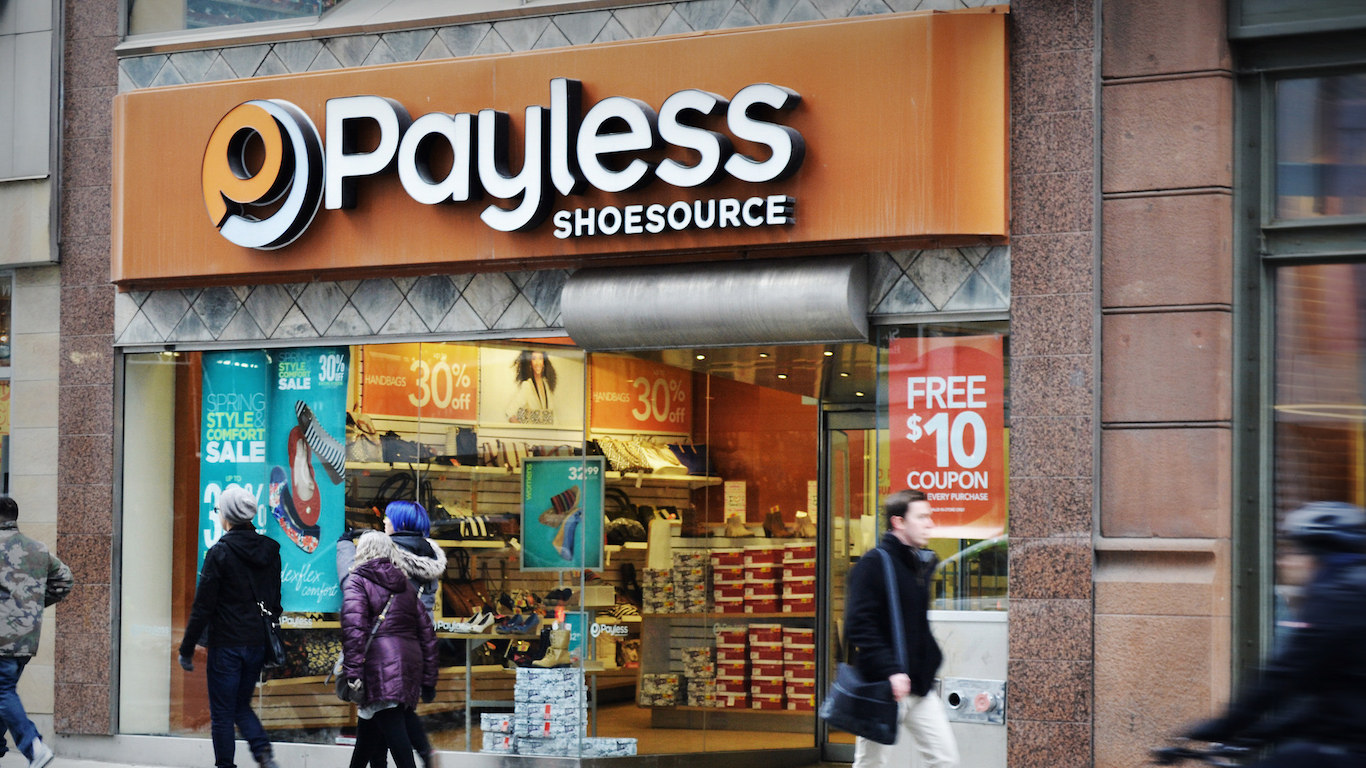
2. Payless ShoeSource
> Closings: 400
> Total stores: 4,400 (global)
> Industry: Footwear
Global footwear retailer Payless ShoeSource announced in April that it has filed for Chapter 11 bankruptcy protection. As part of the announcement, the company stated its intention to shutter around 400 locations, or roughly 10% of its global store footprint. The company had, in fact, been working out a plan to deal with its substantial debt, and at one point earlier this year was reportedly considering closing as many as 1,000 locations. In a release on its website, Payless explained the bankruptcy was an effort to reorganize “in the face of the retail industry’s radical, unprecedented transformation.”
[in-text-ad]

1. Radioshack
> Closings: 530+
> Total stores: 1,500
> Industry: Electronics
Just over two years ago, unable to compete with other brick-and-mortar stores and online retailers like Amazon, electronics retail giant RadioShack declared bankruptcy. At the time, General Wireless Operations, Inc. won a bankruptcy auction and bought the brand. In order to keep some of its locations, the company made a deal with Sprint, agreeing to host a number of the wireless provider’s stores inside Radioshack locations. RadioShack proceeded closed more than half of its roughly 4,000 stores.
Now owned by General Wireless, RadioShack has once again filed for Chapter 11 bankruptcy protection in early March. When the announcement was made, 187 RadioShack locations were already in the process of closing their doors. An additional 365 stores will close by the end of the month. The company has yet to decide what will happen to its remaining roughly 1,000 locations.
Take This Retirement Quiz To Get Matched With An Advisor Now (Sponsored)
Are you ready for retirement? Planning for retirement can be overwhelming, that’s why it could be a good idea to speak to a fiduciary financial advisor about your goals today.
Start by taking this retirement quiz right here from SmartAsset that will match you with up to 3 financial advisors that serve your area and beyond in 5 minutes. Smart Asset is now matching over 50,000 people a month.
Click here now to get started.
Thank you for reading! Have some feedback for us?
Contact the 24/7 Wall St. editorial team.
 24/7 Wall St.
24/7 Wall St.

